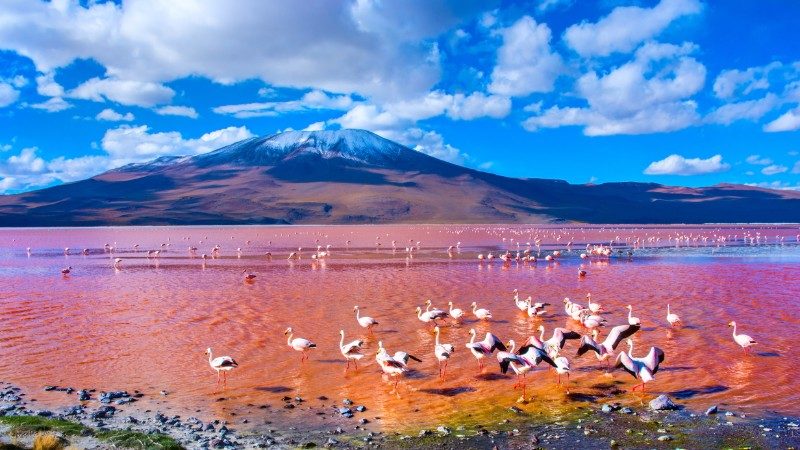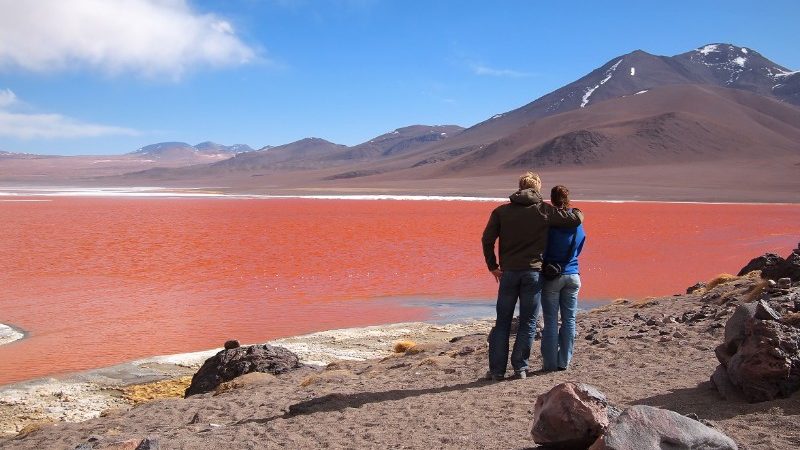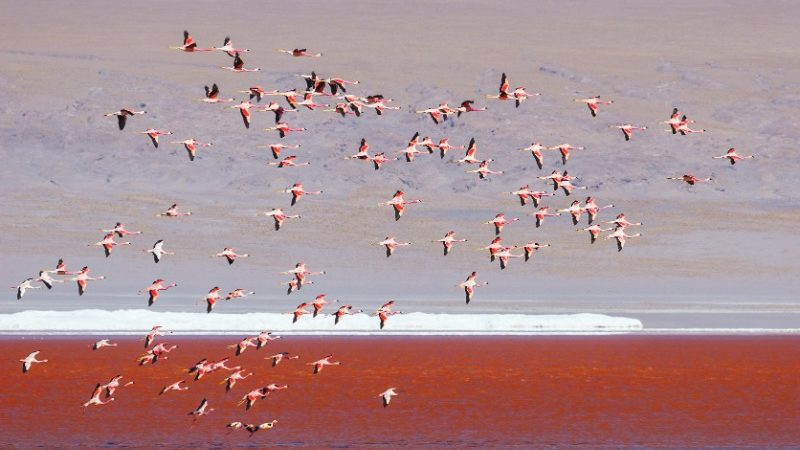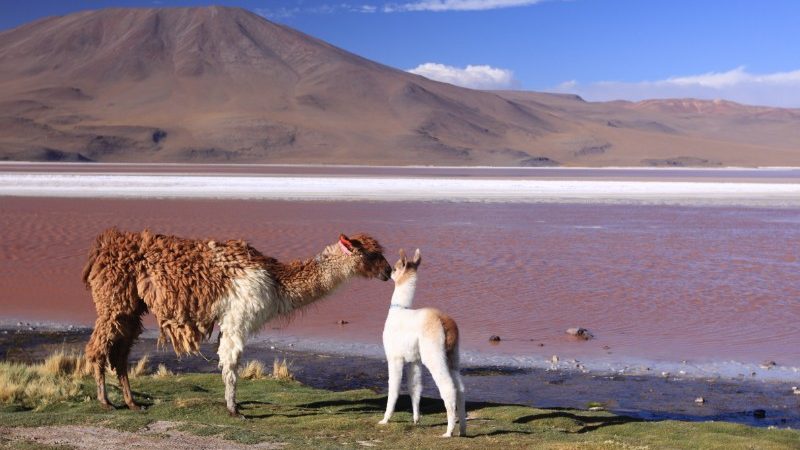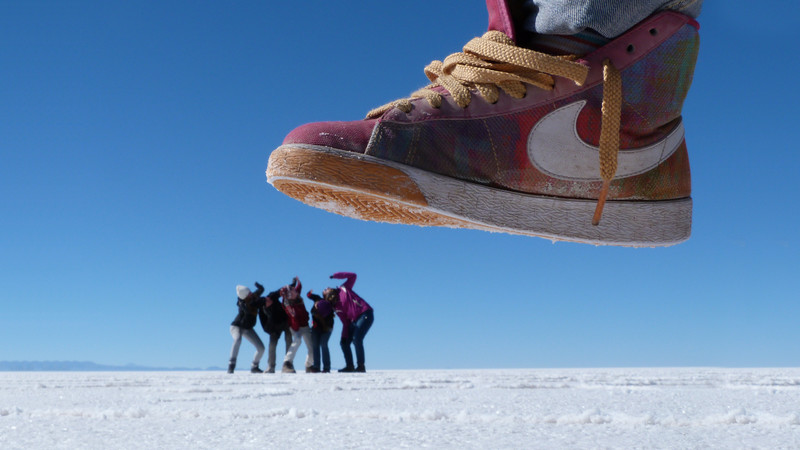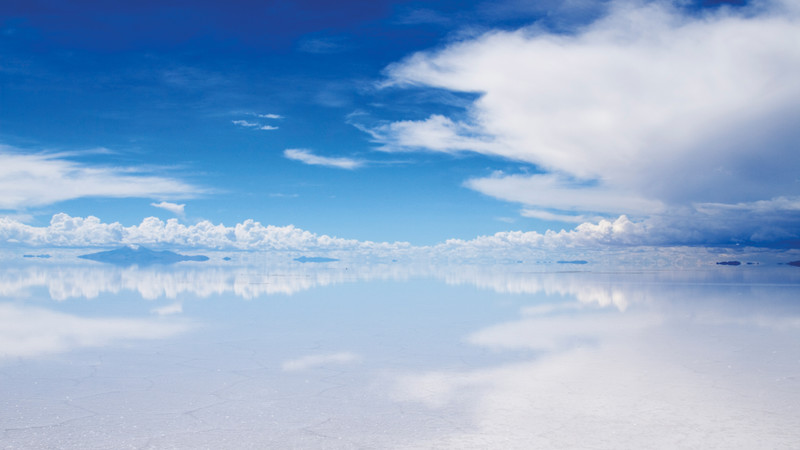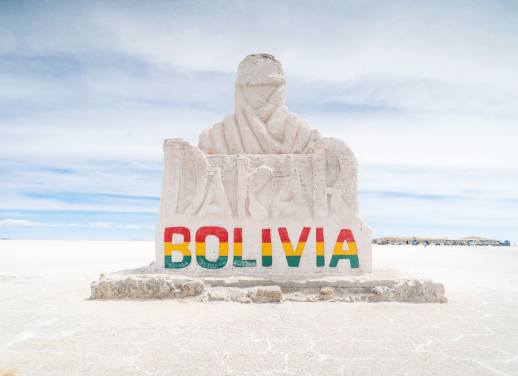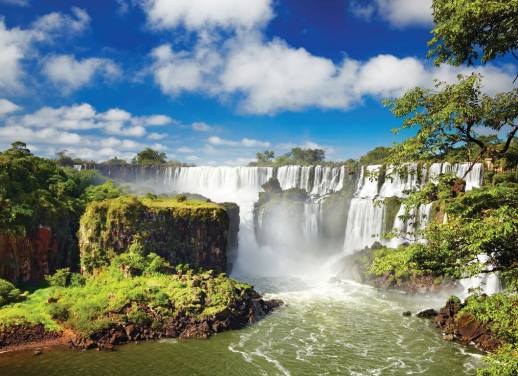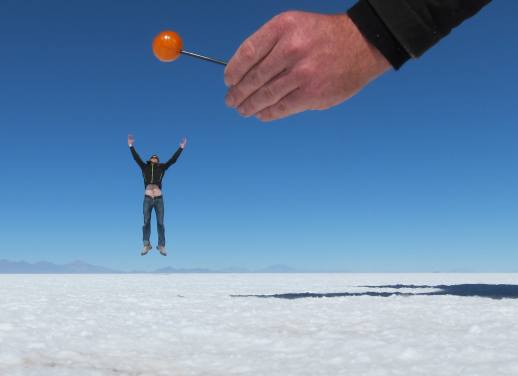The south western corner of the Bolivian altiplano is an awe-inspiring, otherworldly landscape. Trundling along the dusty tracks of the Siloli Desert and the Eduardo Avaroa Andean Fauna National Reserve in an ageing 4WD, you’ll find yourself dwarfed by the sheer scale of the place.
It’s a vast, high-altitude desert plain of smoking volcanoes, Dali-esque rock formations, boiling mud and drifting snow, with the Andes towering ever present. After two days travelling, you’ll come to a rare natural wonder near the border of Chile; a blood-red lagoon, filled with hundreds of pink flamingos. It’s known as Laguna Colorada.
What is it?
The Laguna Colorada, or ‘Red Lagoon’, is a shallow salt lake, peppered with white borax islands. It spans 6000 hectares, but is less than a metre deep. Folklore suggests the water is actually the blood of the gods, though scientists seem to believe the colour comes from the algae and rich minerals in the water. Photographers from around the world are attracted by the spectacular setting, with the deep crimson lake a stark contrast to the clear blue sky and the white snow on the distant mountains.
RELATED: SALT FLATS & GEYSERS – THE BEAUTY OF VISITING BOLIVIA WITH INTREPID
Why are there so many flamingos?
Flamingos are drawn to the lake thanks to its abundant supply of plankton. Three of the world’s six species of flamingo can be found here: the Chilean, Andean and the James’ Flamingo. That last one is incredibly rare – the species is only found in the high Andean plateaus and was thought to be extinct until a small population was rediscovered in 1956. Curiously, the flamingos are naturally white; they look pink because the red algae stains their feathers. Watching them take off is fun: they’re so heavy they have to get up to speed like a plane on a runway, and sprint like mad while flapping their wings. It’s amazing to see a flamboyance of flamingos flying overhead, with their majestic wing spans and spindly little legs.
Sounds like a great place to take pictures. When’s the best time of day for photographers?
The water looks most red just before sunset, though seeing the mist rising from the volcanic warm water in the early morning is also pretty special. If you’re lucky, you’ll be able to get a picture of the flamingos in flight with the mirrored surface reflecting them, and the Andes in the background. It was too murky for us to get that shot when we visited, but we got something very similar at the Laguna Verde, or Green Lake.
RELATED: 10 REASONS WHY BOLIVIA SHOULD BE ON YOUR BUCKET LIST
When should I go?
The best time to visit Bolivia – and its popular neighbor Peru – is during winter, which features blue skies, sunshine and very little rain (think late May to October). However, there are more flamingos during the rainy season (December through April); rain also increases your chance of seeing the world’s largest salt plain, the Salar de Uyuni, flooded and transformed into the world’s largest mirror.
Where do I stay?
The only hotel nearby is the Laguna Colorada Simple Mountain Lodge. Describing it ‘basic’ considerably oversells it. It looks like a post-apocalyptic frontier trading post and, despite overnight temperatures dropping to minus 20 degrees Celsius in July, there’s no heating, insulation, carpet, hot water or electric lighting after 9pm. For once you’ll welcome sharing a room with ten others, because their body heat warms the place up a bit. Despite the privations, there’s a real sense of camaraderie with the other people on your tour; this truly is a shared adventure.
How do I get there?
Most people take a 3-day 4WD loop tour from the frontier town of Uyuni, nine hours from La Paz; this excursion is included on a number of Intrepid trips.
RELATED: WHY YOU’LL LOVE SAN PEDRO DE ATACAMA
What else will I see in the region?
You see a lot of the spectacular landscape out the window of a 4WD, as you bump along the rutted roads with around five other travellers. The first day is mostly spent visiting and taking trick photos on the Salar de Uyuni. In the west of the Salar, you’ll visit Isla Inchahuasi, which looms out of the salt and translates as “Fish Island”. There are no fish, and it’s technically not an island, but it looks spectacular as it’s covered in ancient giant cacti. Tours often spend the night at a salt hotel (everything from the beds to the chairs is made of salt) before you ascend to the high desert plains, where you stop at the brightly coloured lagoons (red, white and green) and catch glimpses of herds of llamas and alpacas, viscachaas and pumas (if you’re lucky – like we were – you may even see an Andean fox).
You’ll see Bolivia’s only active volcano, Ollague, wafting smoke, and the Arbol de Piedra, a rock formation that looks like Salvador Dali sculpted a tree. You’ll take an early morning trip to the Solar de Manaña sulphur springs field at 4850 metres, a Martian-style landscape of bubbling mud pools and fumaroles belching steam. And after enduring the bitter cold, there’s nothing better than slipping into the 29 degree Termales de Polques hot springs. Sitting half naked in clouds of billowing steam at 4400 metres, you’ll finally warm up and enjoy the sunshine and view across the lake. That’s when I started to realise just how incredible the journey had been. The long days of driving and the freezing weather can be challenging, but these are memories that will last a lifetime.
Ready to explore Bolivia’s most incredible natural wonder? Check it out on one of these excellent adventures with Intrepid.
Feature photo by Byelikova Oksana, Shutterstock

